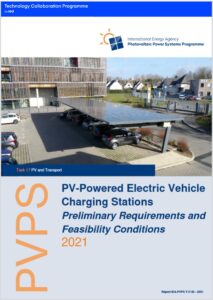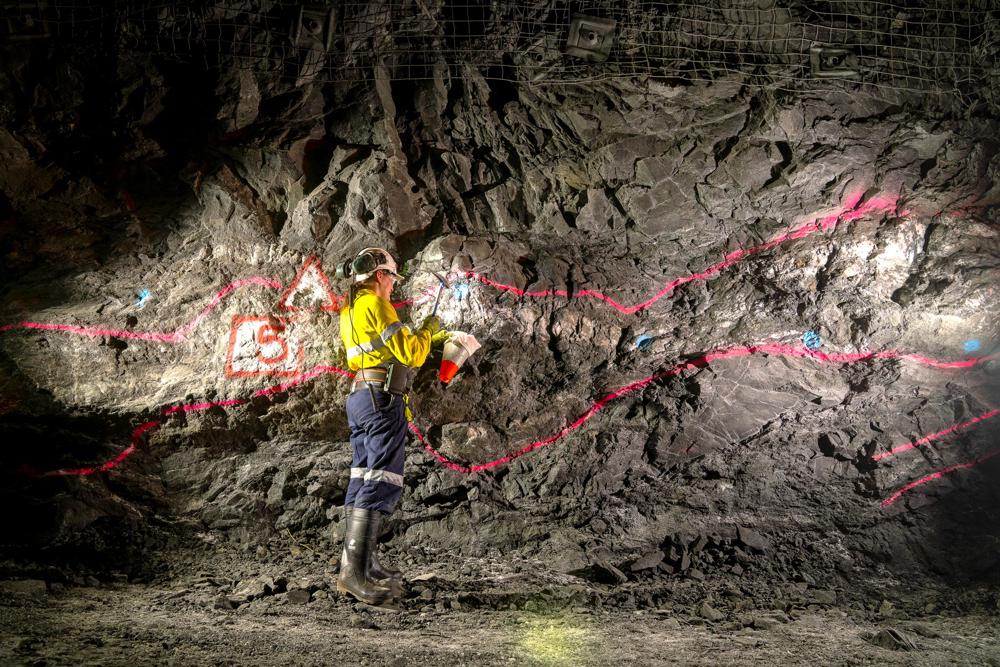
The number of PV-powered charging stations (PVCS) around the world is rapidly increasing, and this technology may offer significant benefits to drivers and become an important contribution to the energy transition. However, the optimal implementation of PVCS at scale requires the right technical and sizing, combination of stationary storage and grid connection, and change in vehicle use and driver behaviour.
PVCS have the potential to further decrease the CO2 emissions impact of electrified transport and accelerate the adoption of electric vehicles overall due to decreased dependence on the public grid. PVCS with a well-designed power management strategy are also an appropriate bridging technology to vehicle-to-grid and vehicle-to-home services, both of which are not yet ready for large-scale use.
The key areas to consider, solve for, and standardise include the use and management of PV electricity, different driving profiles, different solar irradiance per location, and how to integrate PVCS components while retaining mechanical and physical reliability and safety.
Generally, the development of PVCS is based on charging both on-grid and off-grid by either large PV power plants or a microgrid made up of a PV plant, storage, loads and power management. Currently, not many PV installations are able to fully meet the energy needs of electric vehicles, and their charging is still at least partly dependent on the public grid.
The two major charging capabilities and behaviours also affect the overall benefits to both the user and the environment:
- Slow charging mode: charging power of up to 7kW, based only on PV energy and optimised stationary storage energy, filling EV battery up to 6kWh on average, and requiring user acceptance of long, slow charging.
- Fast charging mode: charging power of between 7kW and 22kW based on public grid energy and stationery storage limited at 7kW, requiring user acceptance of the higher environmental impact of grid energy.
For the roll out of PVCS at scale, the following requirements have been identified to optimise their implementation:
- Charging behaviour
- Daily charging over weekly charging
- Long and slow charging when possible
- Limit charging to the number of kWh required for the day, or charge more when PV power is available
- Limit charging power and stationary storage power to about 7kW
- Give priority to charging stationary batteries by PV over charging from grid
- PVCS Design
- Choose an optimal size for stationary storage
- Design methodologies and tools will be helpful for optimally sizing PVCS
- Local conditions and impact:
- Each PVCS needs to be designed to suit the local site requirements, weather conditions and user profiles in order to make full use of the PV energy
- Each PVCS needs to be assessed within the local area for societal impact and acceptance as well as aesthetic design impacts.
- Strategy:
- Well-conceived power management strategies with Vehicle to grid (V2G) and Vehicle to Home (V2H) integration to reduce the peak pressure on the public grid
- Long EV parking time to allow for slow charging
- Appropriate education around charging speeds and their environmental impact,
- Communication between the operators and the end-users:
- EV charge control software based on powerful algorithms, allowing intelligent communication
- PV production forecasting and communication
The feasibility conditions of PV-powered electric vehicle charging stations are explored in a new report from the IEA PV Power Systems report authored by PV experts from France and the Netherlands.
Research results in France indicate that PVCS is socially acceptable to a large majority, although some aspects such as location, business model, and design require careful consideration. PVCS design is a relevant topic for user acceptance of new forms of PVCS as well as for communicating to users their function and their focus on sustainability.
Further studies in this area will focus on the most effective size of the stationary storage, managing the physical size of this storage according to charging station dimensions and proposing a business model with appropriate charging prices for EV users.












